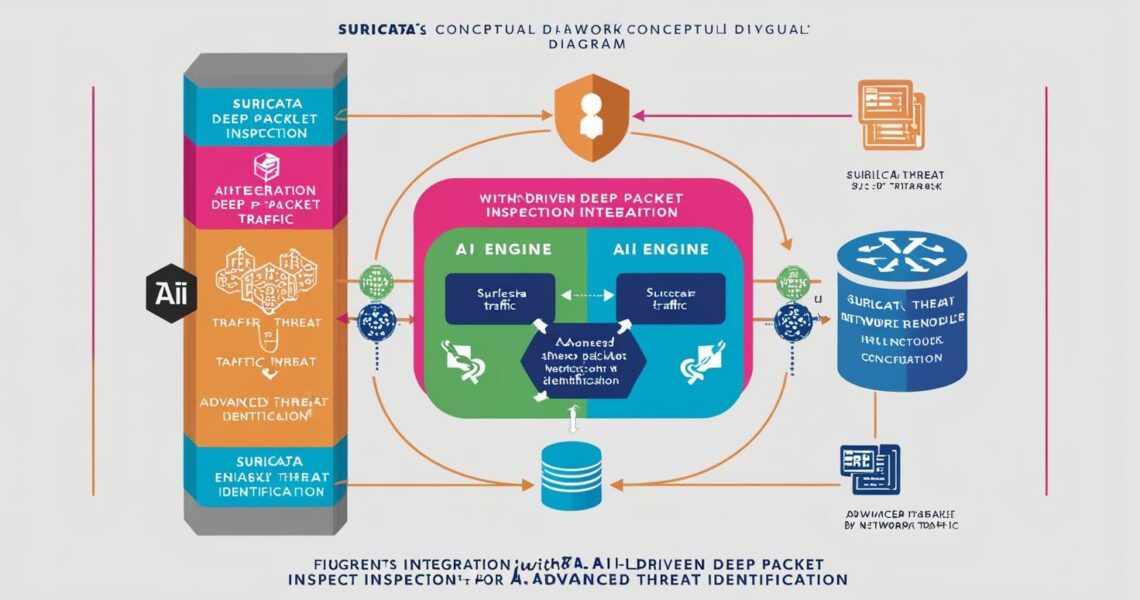Unlocking Suricata’s Full Potential: AI-Driven DPI Tactics for 2025 🌐
🌿 Why AI-Driven DPI Matters for Suricata in 2025
Let me start with a story. Last year, a client’s network was flooded with false positives from their Suricata setup. They were drowning in alerts, missing real threats. Sound familiar? That’s where AI-driven DPI steps in.
In 2025, cyberattacks are smarter—think encrypted C2 channels and domain fronting. Traditional DPI struggles with these stealthy tactics, but AI-enhanced Suricata uses machine learning to decode encrypted traffic and spot anomalies like non-standard protocol usage.
Here’s the thing: AI doesn’t just reduce false positives by 40%; it turns Suricata into a predictive shield. By analyzing metadata patterns, AI anticipates threats before they strike.
🔍 How AI Enhances Suricata’s Deep Packet Inspection
Suricata’s core strength lies in its rulesets, but AI supercharges them. Let’s break it down:
- Contextual Metadata Enrichment
AI tools like ChatGPT analyze Suricata’s alert payloads, adding context to threats (e.g., linking C2 traffic to MITRE ATT&CK techniques like T1071). - Protocol Agnosticism
Next-gen DPI identifies any protocol—legacy, IoT, or custom—making Suricata adaptable to hybrid networks. - Real-Time Adaptation
Machine learning models update rules dynamically. For example, if Suricata detects a new ransomware variant, AI tweaks detection parameters in seconds.
🛠️ 3 Tactics to Implement AI-Driven DPI Today
Tactic 1: Integrate Suricata with MITRE ATT&CK Mapping
Use automated tools to map Suricata rules to MITRE techniques. Tools like Automated Suricata-to-ATT&CK Mapper leverage NLP to classify threats accurately, even with limited labeled data.
Tactic 2: Deploy AI-Powered Traffic Analysis
Pair Suricata with AI platforms like Stamus Networks. Their webinar (watch here) shows how AI identifies malware like Xloader by correlating flow data and payloads.
Tactic 3: Optimize Rules with Predictive Analytics
Train models on historical Suricata logs to predict emerging threats. For example, AI flagged a spike in DNS tunneling months before it became widespread in 2024.
🚧 Overcoming Challenges: Ethics, Data, and Skill Gaps
Challenge 1: Data Quality
AI thrives on clean data, but Suricata’s logs can be noisy. Fix this by preprocessing data—remove duplicates, standardize tags, and use TF-IDF vectorization for “msg” fields.
Challenge 2: Ethical AI Use
Avoid bias by auditing AI outputs. For instance, ensure models don’t disproportionately flag traffic from specific regions.
Challenge 3: Reskilling Teams
72% of companies now train staff in AI tools (McKinsey). Start with free courses on Suricata’s official documentation and MITRE’s ATT&CK framework.
🔮 The Future of AI and Suricata: What’s Next?
Imagine Suricata 2026: self-healing rules, zero-day prediction, and seamless XDR integration. But today, focus on hybrid human-AI workflows. Let AI handle packet inspection while your team strategizes responses.
As Peter Manev from Stamus Networks says, “AI isn’t replacing analysts—it’s making them superheroes.” 🦸
📌 Final Thoughts
Unlocking Suricata’s potential isn’t about chasing shiny tools. It’s about blending AI’s speed with human intuition. Start small: map one ruleset to ATT&CK, attend a webinar, or trial an AI analyzer.
Ready to transform your network security? The future’s here—and it’s powered by AI-driven DPI.
